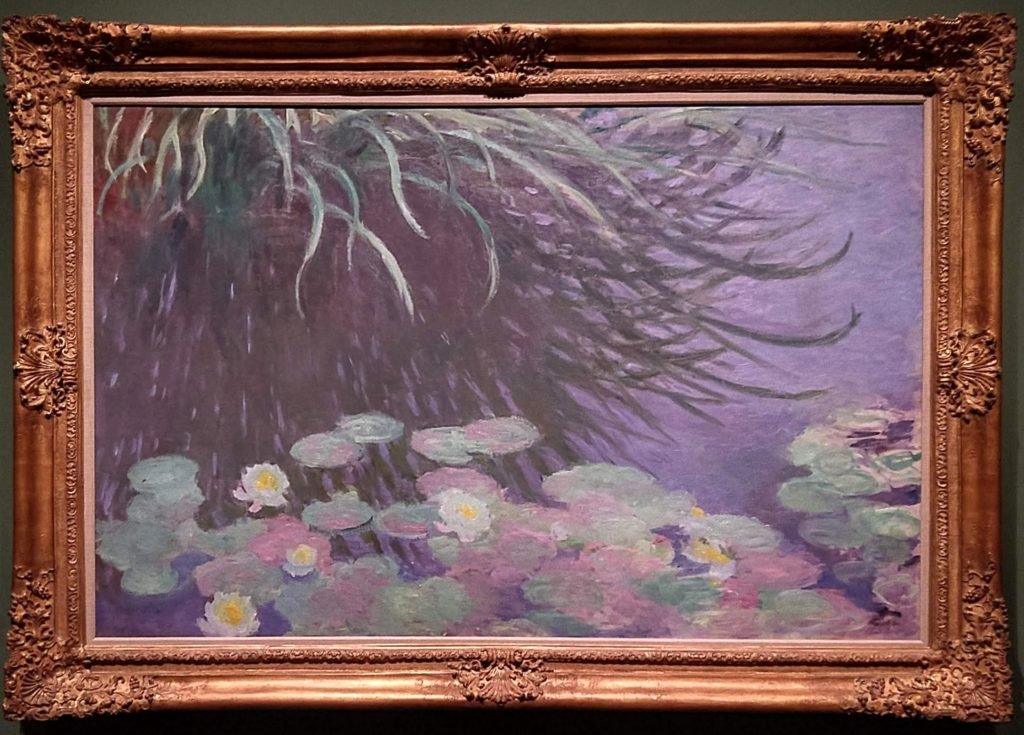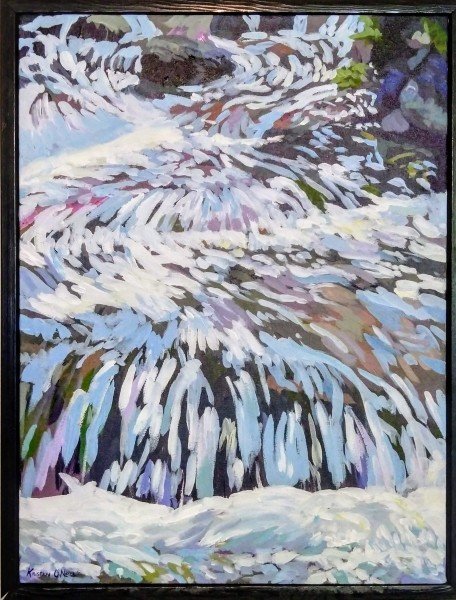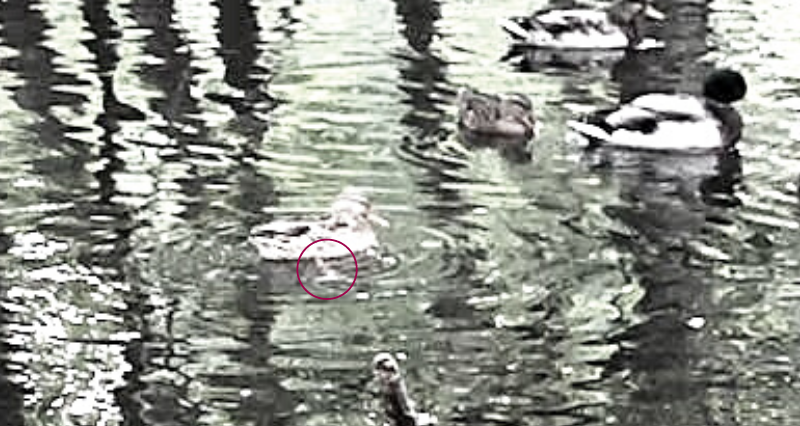This post covers how water reflections are changed by the surface of the water, from calm to choppy waters.
Calm Water
Let’s start out with the easy one, calm water. In perfectly still water the surface acts like a perfect mirror, with no distortions in the reflections. (See other posts about Values in Reflections and Size and Angles of Reflections.) In painting calm water it is critical to get the physics correct, because mistakes will be more obvious. The calm water photo above is all the way to the left. Notice how everything is able to reflect very clearly.
The more the viewer approaches looking straight down at calm water, the more you can see through the water and to what is underneath. The farther away you are looking, the more shallow the angle, the more of the sky you will see. Clarity of the water will affect this greatly.

Claude Monet, Water Lillies, Reflection of Tall Grass, ca. 1897. Photographed at the Late Years exhibit at the DeYoung in 2019.
In Monet’s painting above, the water is still, allowing a perfect reflection on the water’s surface of what is above it. We are not able to see into the pond, since the surface is so perfectly reflective and we are looking out, not down.
Slow Moving Water
Water ripples when the surface of the water is disturbed. This could happen by an object falling in (like throwing rocks in a pond). Or, when the water is moving the bottom changes the water’s shape (like in a creek where the rocks on the bottom cause ripples on the top). Slow moving water gives a painter a lot to play with and have fun. You will be able to pick up water reflections from trees, sky, or whatever is around. The calmer the surface, the more clear the reflection. Slow moving water often gives you ample places to play with reflections. The higher the waves of the ripples, the more angular the reflections.
Fast, Choppy Water
The faster the water is moving, the more agitated the surface becomes. It is hard to get reflections to occur. Think of white water rapids. The light is so choppy, it is just white. Hardly even color from the sky be reflected. Next, think of the ocean. The waves are coming in. The surface is choppy due to a recent storm. And the reflections of the sunset are easy to see, but the cliffs, not so much. The reflections are more abstracted.

© Kristen O’Neill, Parts Per Billion, Acrylic on Canvas, 24″ x 18″. Notice how the water can reflect bits of color of the green where it is shady, and let through bits of the rock underneath, but is mostly white as it ripples from one rock to the next.
The Water’s Surface
The water’s surface creates the place for the reflection to bounce from the object to your eyes. As that surface tilts, so does the image. A duck pond is an excellent place to watch this all play out. The ducks will be still and the surface will calm, then they start paddling around, creating ripples that spread out into each other. Here is a photo of that, with most of the saturation decreased and contrast and brightness increased so that you can concentrate on the vast variety of ripples going on. Notice the circled duck’s feet. This one is sending out a lot of ripples.

Ducks creating ripples. Notice the oval shape of the ripples, and how they collide into other duck’s ripples. The dark trees nearby send out vertical lines that are cast askew by the surface tilting.
The angle of the surface determines how the reflection gets distorted. Next week’s post will cover a bit more on how to create these angles, and put all these water reflection tips together. Please post any comments or questions below!

